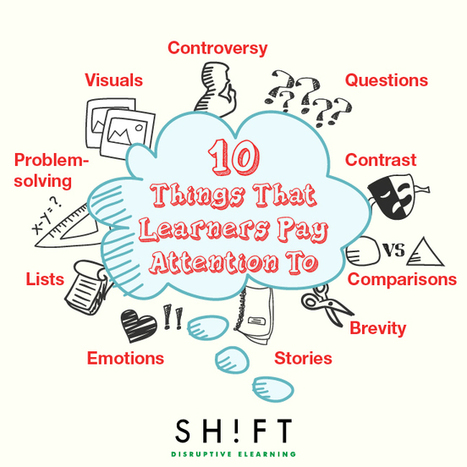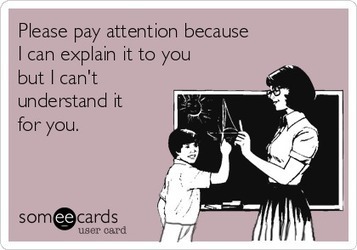"Even more than other types of education, eLearning must struggle to attract learners' attention: the Internet is full of distractions, and adult learners are both busier and more free to indulge in distractions. Helping students to pay attention is a primary concern of training professionals, so here are some optimal methods to win the attention game in eLearning."
Get Started for FREE
Sign up with Facebook Sign up with X
I don't have a Facebook or a X account
 Your new post is loading... Your new post is loading...
 Your new post is loading... Your new post is loading...
Nancy Jones's curator insight,
June 23, 2014 1:38 PM
I love this image. It captures it all. Beth Dichter posts great stuff on a regular basis. I am really spending some serious time inviestigating this topic of buy-in by the students by givening them more ownership . 
Ness Crouch's curator insight,
June 25, 2014 5:38 AM
I like the analogy of a 'sticky lesson'... something that sticks in your head. That's the aim of every lesson... get what you are teaching to stick in the learners head! |

Rosemary Tyrrell, Ed.D.'s curator insight,
June 29, 2014 2:48 PM
15 great tips for engaging student attention. Well worth a read. 
KCenter SKEMA's curator insight,
July 15, 2014 11:25 AM
Grande question pour les enseignants surtout maintenant avec les "distractions" qui se multiplient

Mary Cunningham's curator insight,
October 13, 2013 12:05 PM
This is part of the post on infographics as well, but is interesting enough to have a link just in its own.

it is 3D's curator insight,
November 25, 2013 6:50 AM
3D can improve the success of the kids in the school and also help the teachers to motivate their pupils. One of our products is a 3D player with amazing content in 3D (combustion engine, solar system, human body, etc.). It is incredible to see what you are learning in 3D because it is like having the real object in front of you, which helps kids to have a much better understanding of what they are learning, and you can also play your scans and 3D pictures! Join the 3D revolution and create your own classroom of the future! |
















These are certainly true. Have a look at www.hotmoodle.com
Rien de nouveau sous le soleil du bon e:enseignant, mais plus d'exigences …
and ask indviduals questions every 2-3 minutes - but always label the behaviour first! so it is a positive experience not a catching out!!